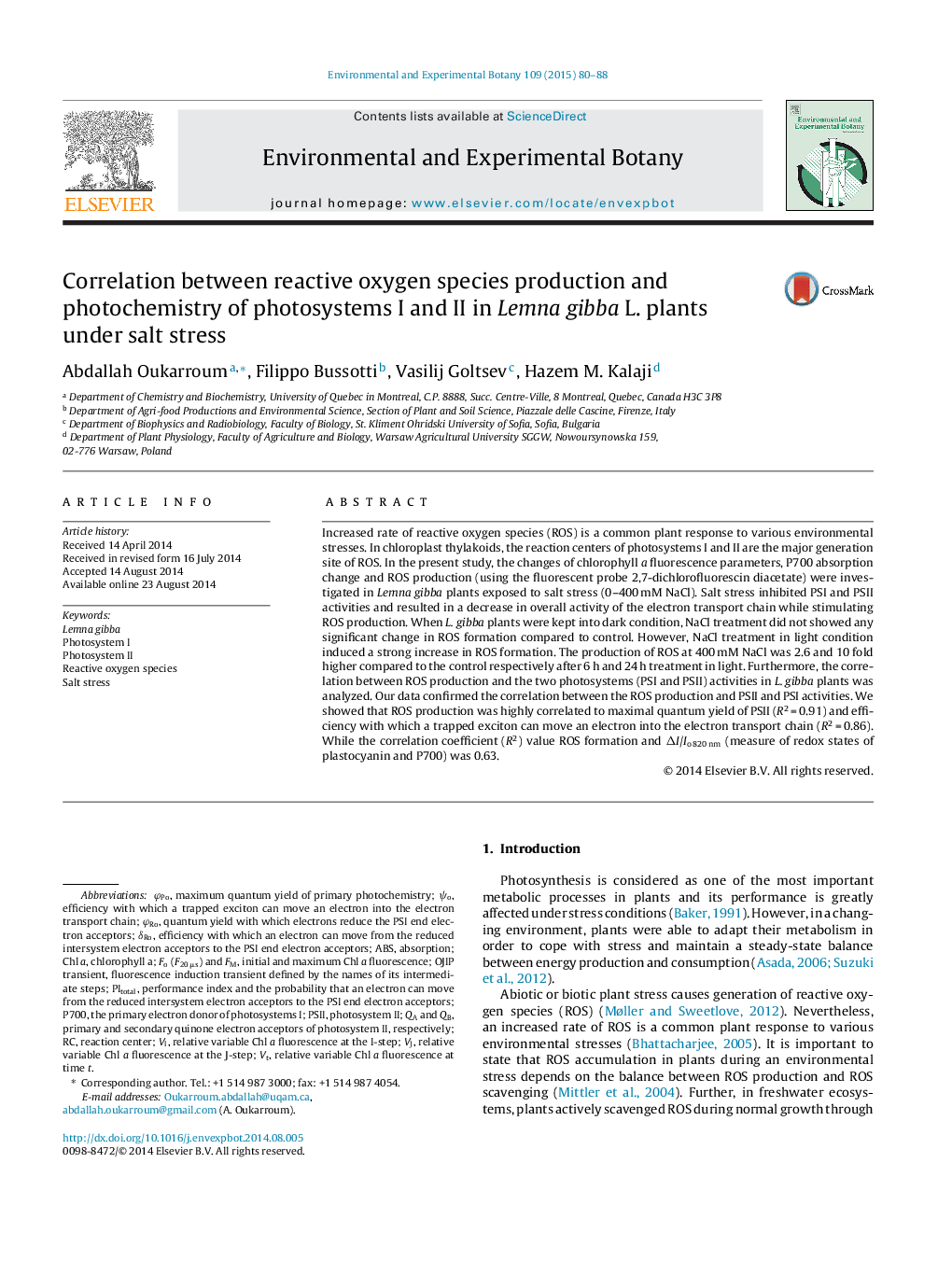| کد مقاله | کد نشریه | سال انتشار | مقاله انگلیسی | نسخه تمام متن |
|---|---|---|---|---|
| 4554320 | 1628068 | 2015 | 9 صفحه PDF | دانلود رایگان |

• Chlorophyll a fluorescence, P700 absorption change and ROS production were investigated in Lemna gibba plants exposed to salt stress.
• Salt stress inhibited PSI and PSII activities and stimulating ROS production.
• ROS production was highly correlated to the maximal quantum yield of PSII.
Increased rate of reactive oxygen species (ROS) is a common plant response to various environmental stresses. In chloroplast thylakoids, the reaction centers of photosystems I and II are the major generation site of ROS. In the present study, the changes of chlorophyll a fluorescence parameters, P700 absorption change and ROS production (using the fluorescent probe 2,7-dichlorofluorescin diacetate) were investigated in Lemna gibba plants exposed to salt stress (0–400 mM NaCl). Salt stress inhibited PSI and PSII activities and resulted in a decrease in overall activity of the electron transport chain while stimulating ROS production. When L. gibba plants were kept into dark condition, NaCl treatment did not showed any significant change in ROS formation compared to control. However, NaCl treatment in light condition induced a strong increase in ROS formation. The production of ROS at 400 mM NaCl was 2.6 and 10 fold higher compared to the control respectively after 6 h and 24 h treatment in light. Furthermore, the correlation between ROS production and the two photosystems (PSI and PSII) activities in L. gibba plants was analyzed. Our data confirmed the correlation between the ROS production and PSII and PSI activities. We showed that ROS production was highly correlated to maximal quantum yield of PSII (R2 = 0.91) and efficiency with which a trapped exciton can move an electron into the electron transport chain (R2 = 0.86). While the correlation coefficient (R2) value ROS formation and ΔI/Io 820 nm (measure of redox states of plastocyanin and P700) was 0.63.
Journal: Environmental and Experimental Botany - Volume 109, January 2015, Pages 80–88